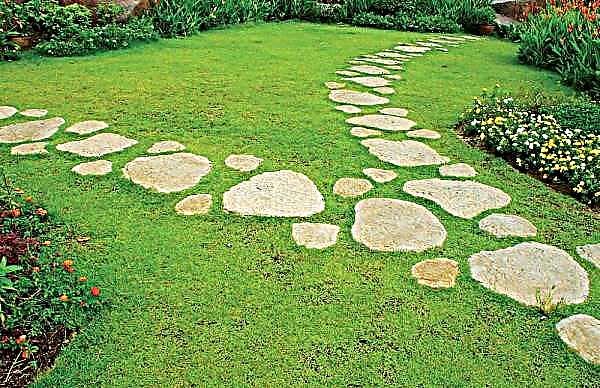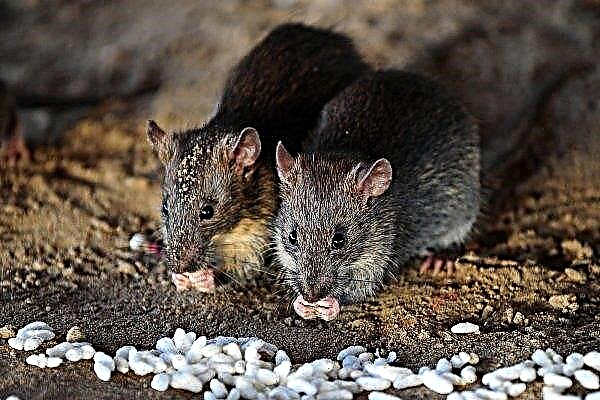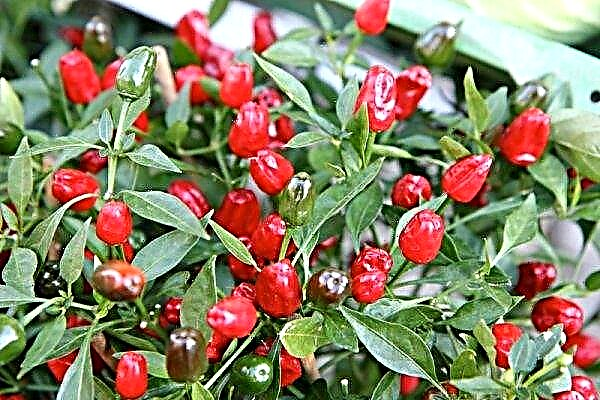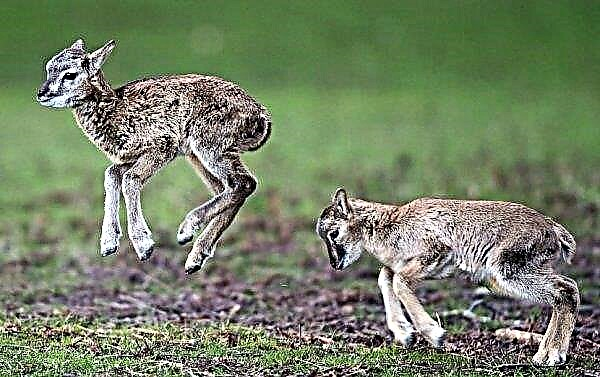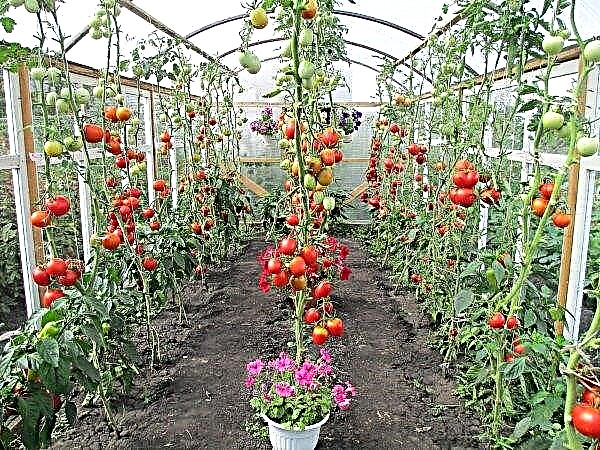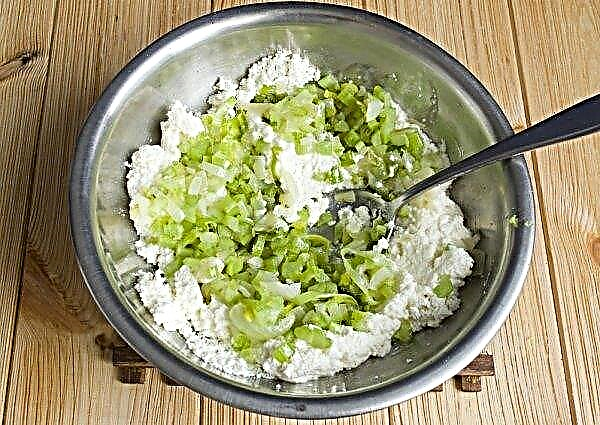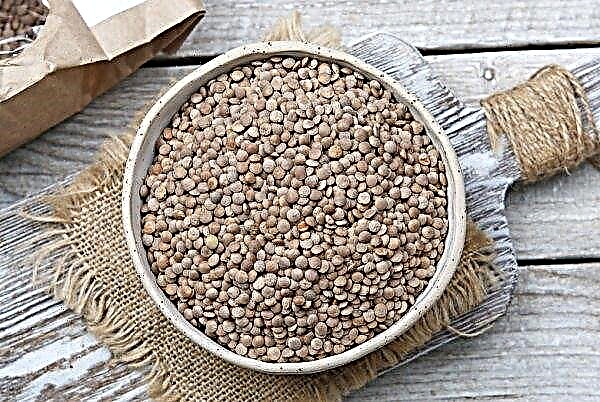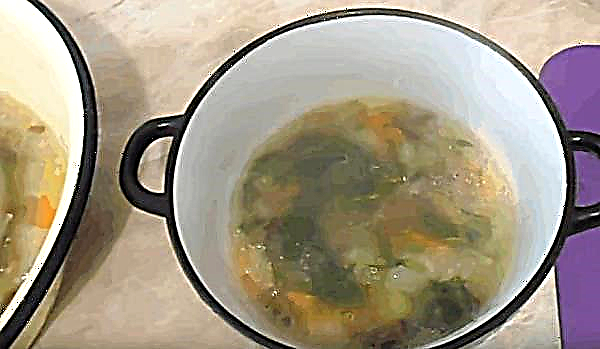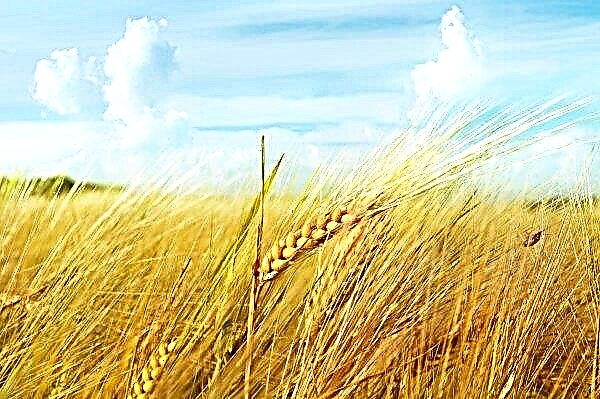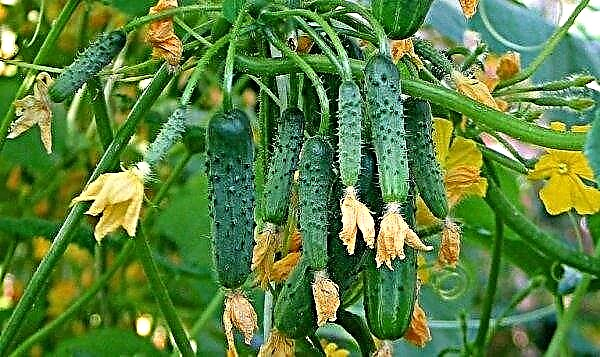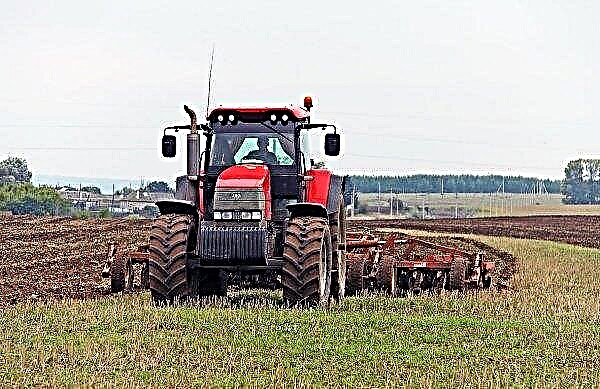The most useful and healing berries are those that were grown in the country or in the garden with your own hands. Maybe the crop will not hit with its volumes, but it will be environmentally friendly, grown without the use of stimulants and chemical plant protection products. Blackcurrant grows in almost every garden plot. All because everyone knows the benefits of berries. In addition, it is a versatile product that can be consumed fresh, can be frozen, dried, used in baking, cook jams, compotes, jams and make aromatic wine.
Description of blackcurrant variety Katyusha
The bush of blackcurrant of the Katyusha variety has average branching indices. When flowering (in May - June), the plant is decorated with yellow-green flowers, and during fruiting - black, glossy berries.
Selection history
The blackcurrant variety Katyusha was created at the Institute for Fruit Growing of the National Academy of Sciences of Belarus by scientists Zazulina N.A., Rainchikova G.P., Voluznev A.G. The variety was developed by hybridization of Paulinka and Pilot varieties Alexander Mamkin. It is entered in the State registry in 1998.
Appearance, characteristics of berries, ripening time, yield
Shrub vigorous, self-pollinated, bisexual. Ripening period is medium. The variety has a stable immunity to all diseases, except fungal. The berries are large, about 1.4 g, oval, black, shiny, with a moderate aroma, thick skin and sweet and sour flesh with some astringency. The fruits ripen at the same time (in July), hold firmly on branches, do not crumble. There is a small amount of seeds in berries.
Did you know? Of the six continents on planet Earth, blackcurrant bushes do not grow only in Australia and Antarctica.
Leaves are three-lobed, with wavy edges. Productivity is high - up to 11 t / ha. Fresh blackcurrant is also rich in vitamins and minerals: A, B5, B6, B1, Ca, K. The fruits contain a significant amount of β-carotene and flavonoids - zeaxanthin and cryptoxanthin, phosphoric acid, tannins are present. Vitamin C in berries is three times more than in oranges. Currant contains a large amount of iron.
Advantages and disadvantages of the variety
For the most part, gardeners speak favorably of the variety.
- The advantages include:
- winter resistance varieties;
- high productivity;
- taste qualities;
- uniform ripening of fruits;
- high self-fertility;
- strong berry retention on the shoots.
- The variety has a few drawbacks:
- exactingness to the soil;
- small berry size;
- the need to protect plants from the wind;
- regular annual foliar top dressing;
- medium pest resistance;
- plant damage by fungal diseases.
Agricultural technology
When planting a variety of blackcurrant Katyusha, it is very important to take the choice of location, soil quality and further care very seriously.
Seat selection and landing
Blackcurrant will grow well in a place where it "receives" the morning rays of the sun and daylight shadow. Blackcurrant Katyusha prefers well-drained, water-holding soils. She needs humus-rich, heavy soil, possibly with clay added. Sandy soils need to be saturated with nutrients and fertile soil. The acidity level is preferred from 6 to 6.5 pH. This variety does not tolerate drafts and cold winter winds, so it is preferable to plant plants near the barriers.
A plant with an open root system will respond better to an autumn planting (September - October) than to a spring one. A fruit crop that is temporarily in containers can be planted at any time of the year if the soil in the garden is not too wet. It is better to buy seedlings in certified stores or nurseries. So you can avoid viral diseases. The seedlings should have a minimum of 3-4 shoots, a healthy root system (without signs of rot), several formed buds. A pit for planting is prepared in advance. It is better to do this 3-4 weeks before the planting itself. If you need to plant several seedlings, then they are placed at a distance of 1.8 m from each other.
So you can avoid viral diseases. The seedlings should have a minimum of 3-4 shoots, a healthy root system (without signs of rot), several formed buds. A pit for planting is prepared in advance. It is better to do this 3-4 weeks before the planting itself. If you need to plant several seedlings, then they are placed at a distance of 1.8 m from each other.
Important! It is necessary to seriously approach the choice of the composition of the mulching layer, since the substrate can stop the appearance of weeds and significantly reduce the need for watering.
Landing Algorithm:
- To clear the soil of weeds, dig a hole 50 × 50 cm (for two-year-old seedlings). If the plant is more "adult", then the hole should be deeper and wider. It is necessary that when planting the roots of the seedling are well spread. In the case of planting a plant with a lump of earth with which it was removed from the container, you need to dig a hole at least twice the circumference of the pot in which blackcurrant was bought.
- Lay a drainage layer at the bottom of the landing pit: pebbles, broken brick or tile.
- The addition of fertilizers during planting increases the yield of blackcurrant, so you need to enrich the soil with a generous amount of well-rotted manure: 5-10 kg per 1 m². You can add compost - it will provide the plant with a rich supply of nutrients. The estimated norm is 5–10 kg per 1 m². 2-3 tbsp granular double superphosphate is recommended for each bush.
- Pour 1 bucket of water into the hole so that the ground sags before planting.
- Place the seedling in the center of the hole, deepening by 5–10 cm, make the inclination of the stem at 45 °.
- Gradually fill the soil with the entire space around the seedling, compacting it as it is added.
- Water the plant with 1 bucket of water.
- Trim the shoots within 2 buds from the soil level.
- Mulch the soil after planting so that it stays cool and moist. As mulch, you can use sawdust, peat, dry foliage, wood chips.

Care
After planting blackcurrant Katyusha in the first 2-3 weeks, frequent watering will be required - 2 times a week (in dry weather). Later, watering can be reduced to 1 time per week. Under 1 bush pour 10-15 liters of water. The soil often needs to be loosened and weeds removed. Weed control is necessary for the full process of shrub vegetation. Every year, Katyusha needs to be fed blackcurrant.
Important! The use of shovels, pitchforks or hoes when loosening and weeding blackcurrant is not recommended, since you can accidentally damage the root system of the plant.
In the second year after planting, in late autumn, as a fertilizer, you can place a 2.5 cm layer of compost or manure on the ground over the root zones of the bushes. Slowly growing plants can be fed again at the beginning of summer. According to gardeners, the drug "Kemira-Lux" has proven itself as a top dressing. It contains a complex composition of phosphorus, potassium and nitrogen compounds. Fertilize in the quantities described on the label.
Blackcurrant Katyusha will respond well to organic fertilizers.
- Use bird droppings: Insist 1 liter of litter in a warm place for 7 days. Add 2 tbsp. l urea, mix well. Spread around the bushes.
- Apply a decoction of nettles: fill a bucket (5 l) with 2/3 nettles (without seeds). Pour with water, insist 7 days. Pour 1 liter of liquid under each bush.
- Use slurrydiluted with water 5 times. To fertilize plants with such fertilizer, you need to make grooves on both sides of the bushes (depth - 8 cm) and add the solution to them. Norm - 10 liters per 1 m².

Pest and Disease Control
Gall leaf aphid can cause significant damage to the plant.
Signs of an insect attack:
- reddish swellings on the leaves;
- foliage twisting;
- the curvature of young shoots.
Methods of struggle:
- spraying in early spring before budding with Nitrofen;
- spraying with a soap solution - per 1 liter of water 30 g of grated laundry soap;
- spraying with a soapy solution - per 1 liter of water 40 g of grated tar soap;
- spraying with a solution of wood ash - in 8 l of water add 2 kg of wood ash, leave for 2 days. Before use - strain.
Processing plants is carried out in cloudy weather. Sometimes currants shrubs are affected by powdery mildew. A sign of the disease is the appearance of loose plaque on the surface of young leaves. Irrigation of shrubs "Fitosporin" will help to cope with the disease.
Did you know? Blackcurrant oil is used in the production of anti-aging cosmetics, as it is a unique source of omega fatty acids.
White spotting is a common disease of currant bushes. The cause of this fungal ailment may be wet weather or excessive watering. Tillage and currant plantings is carried out in the spring, before bud budding, by Nitroferon or copper sulfate. White blotch currant.
White blotch currant.
Trimming and shaping a bush
Shrubs of blackcurrant Katyusha need constant updating (pruning). Over time, the old shoots begin to form less and less fruits, so their third part needs to be cut. During the first year of life, the plant does not need pruning.
In the second year after planting, pruning should be done, freeing up space in the center of the bush from old and dry shoots. The plant should form a cup-like form. Such pruning will provide air circulation, which will help to avoid fungal diseases. Fig. 1. Currant pruning: a - annual seedling; b - a biennial bush; c, d - shortening of shoots. Fig. 2. Currant bush before anti-aging pruning (a), after it (b) and pruning of a neglected bush (c).
Fig. 1. Currant pruning: a - annual seedling; b - a biennial bush; c, d - shortening of shoots. Fig. 2. Currant bush before anti-aging pruning (a), after it (b) and pruning of a neglected bush (c).
Wintering
Preparing for winter involves carefully digging, mulching the soil with a thick (at least 10 cm) layer of organic matter and shelter. As mulch use straw, sawdust, fallen dry foliage, coniferous litter. You can use industrial materials - spunbond, lutrasil.
In snowy winter, the bushes are covered with a layer of snow. In regions with little snow, shoots are tied with twine and bent to the ground. Cover at very low temperatures with cardboard or agrofiber. Important - air must flow to the shoots freely.
Harvesting and transportation of the crop, shelf life of berries
Berries are picked on dry days to avoid the rapid development of mold on the crop. Fruits must be fully ripe, as evidenced by their black color. Fresh Katyusha berries are stored in the refrigerator for about 4 days. If you save longer, they will start to wrinkle and become unpresentable. Frozen berries are stored in the freezer for 6 months. The fruits can be dried. Blackcurrant of Katyusha variety is suitable for transportation over long distances. If you plant several currant bushes of different ripening periods on the site, the family will be provided with vitamins all season, without a break. The main thing is to choose such varieties that, by their characteristics, will be most suitable for cultivation in each individual region.
The fruits can be dried. Blackcurrant of Katyusha variety is suitable for transportation over long distances. If you plant several currant bushes of different ripening periods on the site, the family will be provided with vitamins all season, without a break. The main thing is to choose such varieties that, by their characteristics, will be most suitable for cultivation in each individual region.
Reviews
Black currant "Katyusha" has been growing in my garden, and in the garden of our granny for more than one year. It is easy to care for, grows fast and the yield is always good, and for this we love it. If planted, it will bear fruit only in the second year, but as it should.

